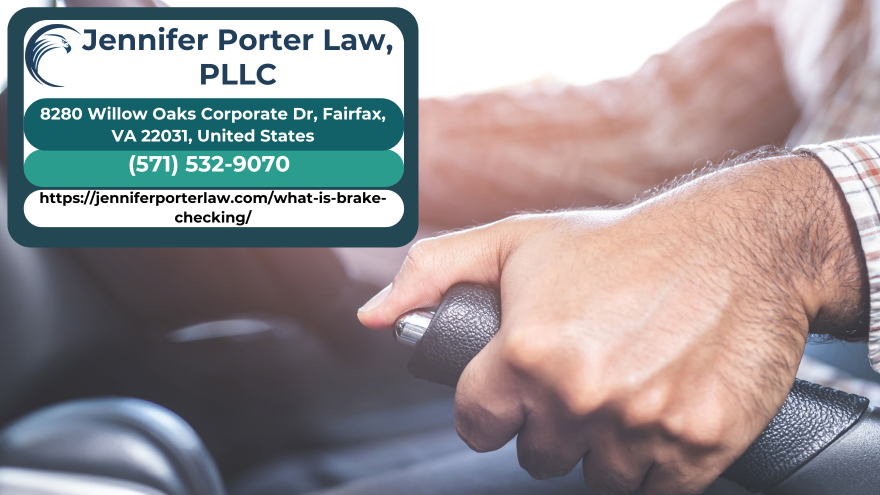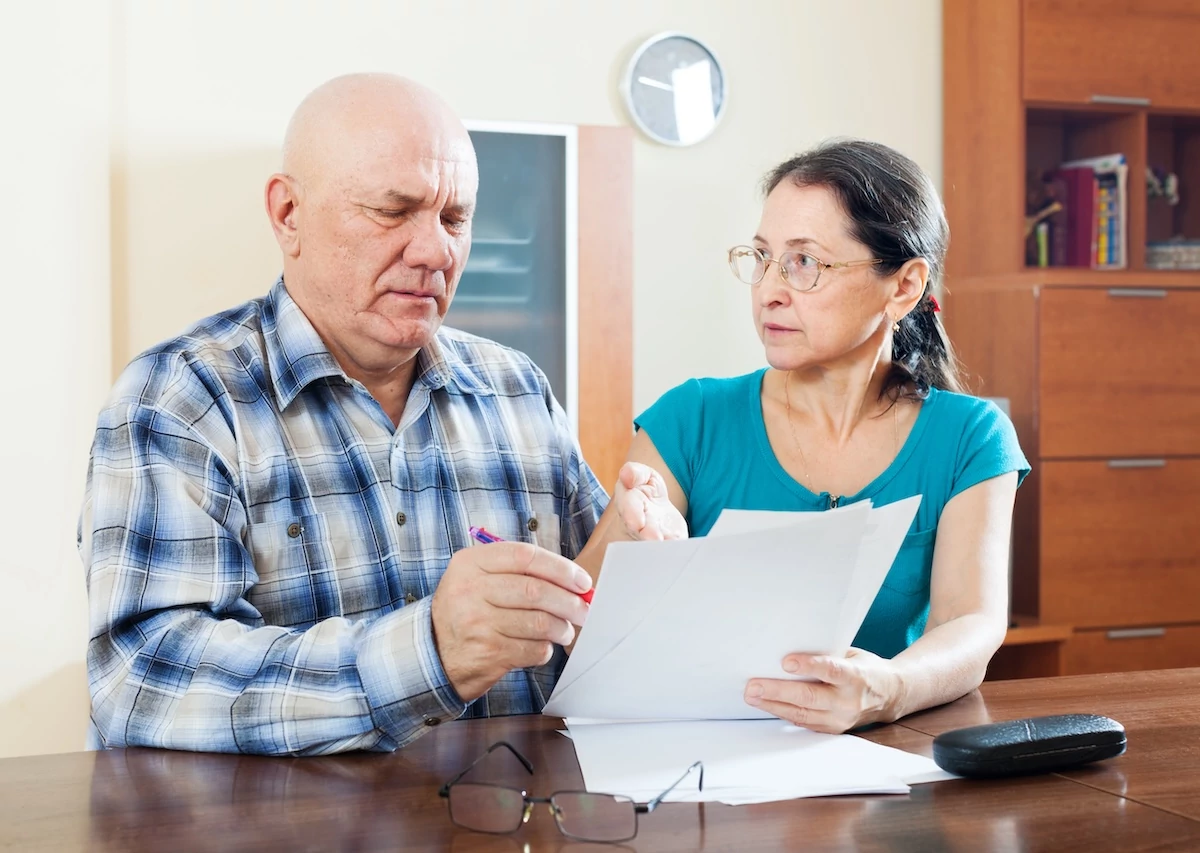Brake checking is a risky driving behavior that can lead to serious accidents, disputes, and legal consequences. Whether it happens due to frustration or as an aggressive reaction to tailgating, it creates unnecessary dangers on the road. Rear-end collisions caused by sudden braking can result in injuries, vehicle damage, and complicated insurance claims. Understanding how liability is determined in these cases and what legal options are available is important for those seeking compensation after an accident.
If you were injured in a brake-checking accident, a Northern Virginia car accident attorney can help you seek compensation for medical expenses, lost wages, and other damages. Dealing with Virginia’s strict traffic laws and insurance claims can be challenging, but legal guidance can help. Jennifer Porter Law, PLLC provides dedicated representation for car accident victims, helping you pursue the compensation you deserve. Call (571) 532-9070 today to discuss your case.
What is Brake Checking?
Brake checking occurs when a driver intentionally slams on their brakes to startle or warn a driver following too closely. While some may believe it is a defensive driving tactic, it is actually considered an aggressive driving behavior. Unlike defensive driving, which focuses on reducing risks and preventing accidents, brake checking increases the likelihood of a collision and can escalate road rage incidents.
Why Some Drivers Do It
Drivers engage in brake checking for several reasons. Frustration with tailgaters is one of the most common motivations. A driver who feels pressured by a vehicle following too closely may abruptly brake in an attempt to force the other driver to back off. In more extreme cases, brake checking is used as an act of road rage, where a driver purposely causes a rear-end collision out of anger. Additionally, some drivers use brake checking as a tactic for insurance fraud, aiming to cause an accident where the rear driver is presumed at fault, allowing them to file a fraudulent claim.
Although a driver may think brake checking will teach another motorist a lesson, this behavior is dangerous and often leads to unintended consequences. Instead of resolving the issue, it increases the risk of a serious accident and legal repercussions for the driver engaging in the maneuver.
Why Brake Checking is Dangerous
Brake checking may seem like a way to control aggressive drivers, but it creates serious risks for everyone on the road. Brake checking can even be considered reckless driving or aggressive driving, both of which can carry heavy fines, license suspension, or even criminal charges.
Risk of Rear-End Collisions
Sudden and unnecessary braking can catch the following driver off guard, significantly increasing the risk of a rear-end collision. Even if the trailing driver reacts quickly, a short following distance may make it impossible to stop in time. Brake checking disrupts the natural flow of traffic, making it particularly hazardous at high speeds or in congested areas where other vehicles have limited room to maneuver.
Additionally, if a rear-end collision occurs due to brake checking, determining fault can be complex. While rear drivers are often presumed to be at fault in these types of crashes, evidence such as dashcam footage, witness statements, and accident reconstructions can reveal that the lead driver intentionally caused the accident. If brake checking is proven, the lead driver may be held responsible for the crash, potentially facing liability for damages, injuries, and even legal penalties.
Serious Injuries and Damage
A brake check-induced collision can lead to severe injuries due to the abrupt deceleration. Common injuries include:
- Whiplash – One of the most frequent injuries in rear-end collisions, whiplash occurs when the neck is forcefully jerked back and forth, leading to pain, stiffness, and mobility issues.
- Head and brain injuries – Sudden impact can cause concussions or traumatic brain injuries (TBI), especially if airbags deploy or a driver’s head strikes the steering wheel or dashboard.
- Broken bones – Arms, wrists, and ribs are particularly vulnerable in crashes, especially if the collision is forceful.
- Spinal injuries – A severe crash can damage the spine, potentially leading to long-term disabilities or paralysis.
Even minor accidents caused by brake checking can result in costly vehicle damage, increased insurance premiums, and legal complications. If the rear driver loses control or swerves to avoid impact, the crash can become even more severe, involving multiple vehicles and innocent bystanders.
Road Rage Escalation
Brake checking does not resolve conflicts on the road—it often makes them worse. Instead of discouraging tailgating, it can provoke the other driver into more aggressive behavior, leading to dangerous confrontations or reckless retaliation. In extreme cases, road rage incidents escalate to physical altercations or multi-vehicle accidents, putting even more lives at risk.
Some tailgating drivers may respond to brake checking with aggressive maneuvers of their own, such as excessive speeding, swerving, or even intentional ramming. In some instances, conflicts that start with brake checking escalate to drivers exiting their vehicles and engaging in physical fights. These situations not only endanger those involved but also create hazards for other motorists.

Is Brake Checking Illegal in Virginia?
Brake checking is illegal in Virginia, even though there is no specific statute that addresses it by name. This behavior falls under Virginia’s reckless driving, aggressive driving, and following too closely laws, all of which impose penalties for creating dangerous conditions on the road. Engaging in brake checking can result in serious legal consequences, including fines, license suspension, and potential jail time.
Reckless Driving Offense
Virginia law classifies reckless driving as operating a vehicle “in a manner so as to endanger the life, limb, or property of any person” under § 46.2-852. Since brake checking is an intentional act that can cause a collision or force other drivers to take evasive action, it meets this legal definition.
A reckless driving charge is a Class 1 misdemeanor, which is the most serious type of misdemeanor in Virginia. The penalties for a conviction include:
- Up to 12 months in jail
- Fines of up to $2,500
- Six demerit points on a driver’s record
- Potential license suspension of up to six months
- Increased insurance premiums and possible policy cancellation
If a brake checking incident results in a crash causing serious injuries or death, the driver could even face felony charges under Virginia law.
Aggressive Driving
Brake checking can also fall under Virginia’s aggressive driving law (§ 46.2-868.1), which prohibits behaviors that intimidate, harass, or obstruct other drivers. This statute specifically references violations such as following too closely, improper passing, and failing to yield, all of which can be involved in brake-checking incidents.
If a driver engages in brake checking with the intent to intimidate or harass another driver, they can be charged with aggressive driving, which is classified as a Class 2 misdemeanor. The penalties for a Class 2 misdemeanor include fines and possible jail time, but if the driver acted with intent to injure another person, the charge is elevated to a Class 1 misdemeanor, carrying the same penalties as reckless driving. In some cases, courts may also require the driver to complete an aggressive driving education program.
Tailgating Law
Although brake checking is illegal, tailgating is also against the law in Virginia under § 46.2-816, which prohibits a driver from following another vehicle more closely than is reasonable and prudent. The law requires drivers to maintain a safe following distance, considering traffic speed and road conditions.
However, a driver who is being tailgated does not have the legal right to brake check the other driver. Both tailgating and brake checking are dangerous behaviors, and both drivers can face penalties if law enforcement determines they contributed to a hazardous situation or accident.
Liability in Brake-Checking Accidents
Determining fault in a brake-checking accident is more complex than in a typical rear-end collision. The challenge in these cases is proving intentional negligence versus an unavoidable traffic situation.
Who Is at Fault?
In Virginia, rear-end collisions typically place liability on the driver who crashes into the back of another vehicle. The reasoning behind this rule is that every driver is responsible for maintaining a safe following distance and reacting appropriately to traffic conditions. However, brake checking introduces another layer of complexity.
If a driver intentionally slams on their brakes without a legitimate reason, they may be held responsible for causing a preventable accident. This is especially true if:
- The front driver has a history of aggressive driving or road rage.
- Witnesses or dashcam footage confirm the brake check was deliberate and unnecessary.
- The rear driver was following at a safe distance but still could not avoid the collision.
In many cases, both drivers share some degree of fault. The rear driver may be ticketed for following too closely, while the front driver could be cited for reckless or aggressive driving. This shared liability can complicate insurance claims and legal proceedings, making it difficult for either driver to recover compensation.
Contributory Negligence in Virginia
Virginia follows a strict contributory negligence rule, one of the toughest liability standards in the country. Under this rule, if an injured party is found to be even 1% at fault, they are completely barred from recovering damages from the other driver.
In brake-checking accidents, this means that if both drivers engaged in reckless behavior—one by tailgating and the other by brake checking—neither may be able to successfully sue for damages. Even if the tailgater suffers severe injuries, if they contributed to the accident in any way, they cannot recover compensation from the brake-checking driver.
This rule makes winning a lawsuit in brake-checking cases particularly difficult, as the opposing party only needs to show a small degree of fault to block a claim. For example:
- If the brake-checking driver sues for injuries or vehicle damage, the tailgater can argue that their own aggressive braking contributed to the crash.
- If the tailgater sues for damages, the brake-checker can argue that they were following too closely and should have anticipated the need to slow down.
Because contributory negligence eliminates claims where both drivers share blame, many brake-checking accident cases fail in Virginia courts.
“Last Clear Chance” Doctrine
One potential exception to Virginia’s contributory negligence rule is the last clear chance doctrine. This legal principle allows a partially at-fault driver to recover damages if they can prove the other driver had the last clear opportunity to avoid the accident but failed to do so.
For example:
- A tailgating driver might argue that the brake-checking driver had the last clear chance to avoid the accident by choosing not to slam on their brakes unnecessarily.
- A brake-checking driver might claim that the tailgater had the last clear chance to back off and maintain a safe following distance to prevent the crash.
This doctrine shifts the focus to which driver had the ability to prevent the accident in the final moments before impact. However, proving last clear chance is highly complex and requires substantial evidence, legal arguments, and expert testimony. Courts may analyze braking patterns, dashcam footage, traffic reports, and eyewitness testimony to determine if this exception applies.
Because the last clear chance argument is difficult to prove, drivers involved in brake-checking accidents should seek legal counsel to determine the best approach for their case.
What To Do After a Brake-Checking Incident
A brake-checking incident can be dangerous and legally complex. Taking the right steps immediately after the crash can help protect your safety, preserve evidence, and support your case.
- Ensure Safety and Health: If a collision occurs, move vehicles out of traffic if possible and check for injuries. Call 911 to report the accident and request medical attention if needed. Even if injuries seem minor, seek medical evaluation since issues like whiplash may appear later.
- Call the Police: Always report the accident to law enforcement. Provide a clear account of what happened and mention if the other driver was driving aggressively or intentionally braking. A police report serves as key evidence for insurance and legal proceedings.
- Gather Evidence on Scene: Take photos of the vehicle damage, positions, skid marks, and road conditions. Exchange insurance and contact information with the other driver. If there are witnesses, get their statements and contact details. Note any signs of road rage or repeated brake-checking before the crash.
- Notify Your Insurance: Report the accident to your insurance company as soon as possible. Stick to the facts, avoid admitting fault, and mention any sudden braking by the other driver. Provide the police report once available.
- Consult an Attorney: Brake-checking incidents often involve disputes over fault. A lawyer can help protect your rights, handle insurance communications, and address legal issues like contributory negligence. Early legal guidance can prevent costly mistakes and strengthen your case.
| Step | What to Do |
|---|---|
| Ensure safety | Move vehicles out of traffic if possible and check for injuries. Call 911 for medical help. |
| Call the police | Report the incident to law enforcement and describe aggressive driving or brake-checking. |
| Gather evidence | Take photos, exchange contact information, and collect witness statements if possible. |
| Notify insurance | Report the crash to your insurer, stick to the facts, and provide the police report if available. |
| Consult an attorney | Get legal advice to deal with fault disputes and insurance communications. |
How to Prove a Brake-Checking Incident
Proving fault in a brake-checking accident can be difficult because both drivers may have engaged in unsafe behavior. Since liability often depends on which driver acted negligently, gathering strong evidence is crucial for any insurance claim or legal defense.
Dashcam or Video Footage
Dashcam recordings are among the most valuable pieces of evidence in a brake-checking case. These recordings can show whether the front driver braked suddenly without cause, whether the rear driver was following too closely, and whether any aggressive driving occurred before the crash. If available, traffic cameras or surveillance cameras from nearby businesses can also provide key footage. In some cases, videos from other vehicles in the area may offer additional perspectives that clarify the sequence of events.
Witness Testimony
Eyewitness accounts from passengers, pedestrians, or other drivers on the road can be critical in supporting a claim. A third-party witness might have observed the front driver tapping the brakes unnecessarily, erratic lane changes, or other aggressive driving behaviors leading up to the crash. If a neutral observer saw the brake lights activate suddenly without any clear reason, their statement could strengthen a case. Since police reports and insurance claims often involve conflicting driver statements, independent witness testimony can provide an unbiased perspective that supports a claim or defense.
Physical Evidence
Skid marks on the road, vehicle damage, and accident reconstruction reports can help determine whether a brake-checking incident occurred. If the rear driver left long skid marks before impact, this may indicate that they were forced to stop suddenly due to an unnecessary brake check.
The location and severity of the vehicle damage can also reveal whether the braking was so abrupt that the rear driver had little chance to react. Modern vehicles often have event data recorders that track speed, braking force, and acceleration. If a vehicle’s data shows a sudden and forceful braking action without an external reason, this may support a claim that brake checking occurred.
Police Report
Law enforcement officers responding to an accident will document statements from the drivers involved and any witnesses, assess the scene, and note any suspected reckless or aggressive driving behaviors. If an officer believes brake checking contributed to the crash, they may include this in the police report, which can serve as key evidence in an insurance claim or court case.
Officers may also cite drivers for violations such as reckless driving, aggressive driving, or following too closely, further clarifying liability. Since a police officer’s assessment carries significant weight, obtaining a copy of the report can be essential for proving a case.
Get Top-Rated Legal Help from Jennifer Porter Law, PLLC
Brake-checking accidents can lead to serious injuries, costly repairs, and complex legal disputes. Virginia’s strict traffic laws and contributory negligence rules make it essential to build a strong case backed by solid evidence. Whether you were injured due to another driver’s reckless actions or are facing challenges with an insurance claim, taking the right legal steps can help you recover the compensation you deserve.
Jennifer Porter Law, PLLC is committed to helping car accident victims in Northern Virginia navigate their claims and protect their rights. With experience handling complex accident cases, our firm provides the guidance and advocacy needed to seek fair compensation. Call (571) 532-9070 today to schedule a consultation and discuss your options.



